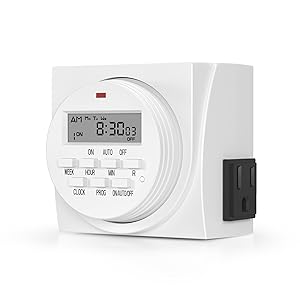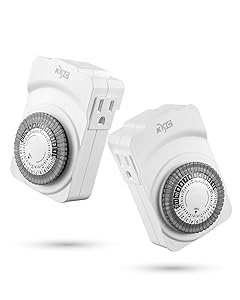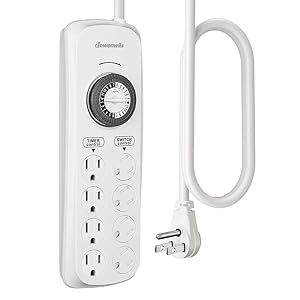A grow light timer automates the lighting schedule for plants, ensuring they receive optimal light at the right time, making it an essential tool for indoor gardeners and plant enthusiasts.
Using a grow light timer offers multiple advantages, including mimicking natural sunlight patterns for optimal plant growth and development, promoting healthy photosynthesis with consistent lighting cycles, and saving energy and costs by preventing unnecessary use of grow lights.
There are various types of grow light timers available in the market. Some common types include mechanical, digital, programmable, and smart timers. These timers differ in their features, functionality, and ease of use. Choosing a timer that best suits your needs and preferences is important.
When choosing a grow light timer, consider the number of lights it can accommodate, the ease of programming, and the durability and reliability needed for your indoor garden setup. Our best choices include the BN-Link timer and the KMC indoor mechanical timer.
Lastly, properly setting up a grow light timer involves plugging it into a power outlet, connecting the grow lights, programming the desired on/off cycle, and regularly monitoring and adjusting the settings based on the specific lighting requirements of your plants.
Table of Contents
- What Are Grow Light Timers?
- What Are the Benefits of Using Grow Light Timers?
- 3 Types of Grow Light Timers
- 5 Best Grow Light Timers for Indoor Plants
- 1. BN-LINK 7 Day Heavy Duty Digital Programmable Timer – Best Pick
- 2. KMC Indoor 24-Hour Mechanical Outlet Timer – Runner-Up
- 3. Fosmon Light Timers for Electrical Outlet Timer – Best Mechanical Timer
- 4. VIVOSUN 7 Day Programmable Digital Timer – Best Safety System
- 5. DEWENWILS Mechanical Timer Power – Best For Bigger Grow Rooms
- How Do You Choose the Best Grow Light Timer?
What Are Grow Light Timers?
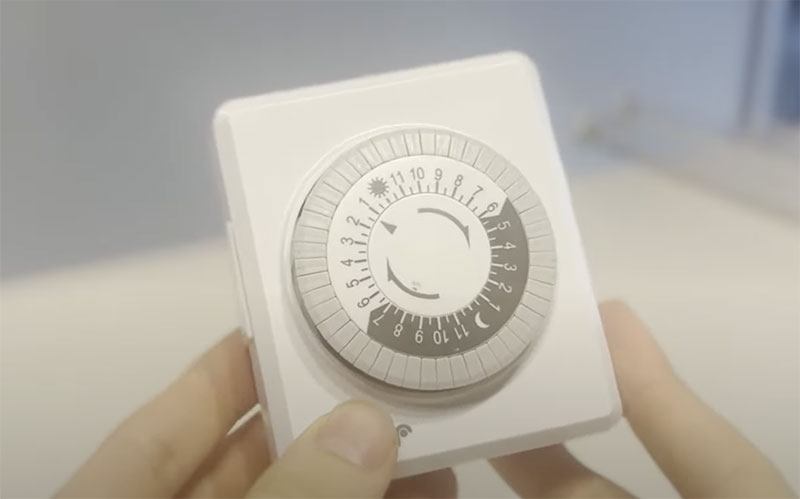
Grow light timers are devices used to control the on-and-off cycles of indoor grow lights.
The functionality of a grow light timer is simple. Once connected to a power outlet, the timer regulates how much the grow lights are turned on and off. By mimicking natural sunlight patterns, the timers help create consistent lighting cycles (18 hours of light followed by 6 hours of darkness) that promote healthy plant growth and development.
Users can program the timer to match the specific lighting requirements of their plants. This includes setting the daily on/off cycle duration, adjusting the light intensity, and even incorporating multiple cycles for different stages of plant growth.
Grow light timers can be used with various types of indoor grow lights, including LED, HPS (High-Pressure Sodium), MH (Metal Halide), CMH (Ceramic Metal Halide), CFL (Compact Fluorescent Lamp), and others. When purchased, they are not typically included with the lights and must be bought separately.
What Are the Benefits of Using Grow Light Timers?
The benefits of using grow light timers include control of the off/on cycles and automation.
Grow light timers are designed to control the automation of on and off cycles of grow lights, ensuring that plants receive the right amount of light at the appropriate times. While it is possible to manually turn the lights on and off, using a timer provides a more efficient and convenient solution. This frees up time and allows you to focus on other aspects of plant care.
Grow light timers allow you to set specific lighting schedules tailored to the needs of your plants. This consistency ensures that plants receive the same amount of light each day, promoting healthy growth and preventing stress caused by irregular light exposure.
By automating the lighting schedule, grow light timers help reduce energy consumption. Lights can be programmed to turn on and off during specific periods, preventing unnecessary use and saving electricity.
3 Types of Grow Light Timers
Types of grow light timers are typically classified according to their operational mechanism. The compatibility of different types of grow light timers with various lights depends on specific features like voltage and current capacity, lighting technology compatibility, dimming and intensity control, remote control, and smart home integration.
When choosing between types of grow light timers, these are the three most common choices: photocells, mechanical, and digital timers.
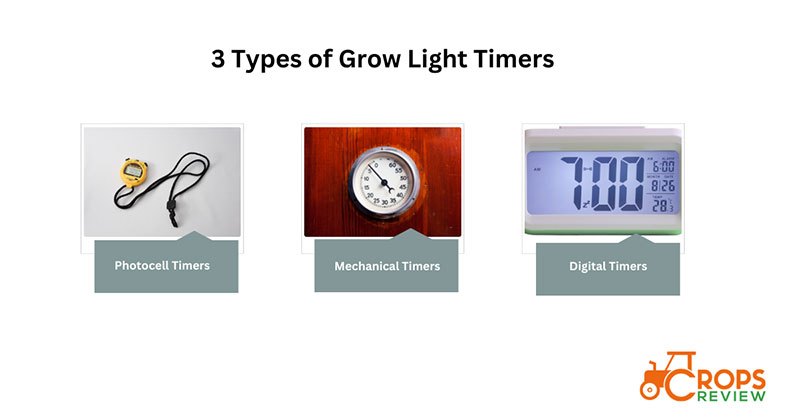
1. Photocell Timers
Photocell timers operate based on ambient light levels and automatically turn lights on at dusk and off at dawn. They are ideal for outdoor grow lights but may be less reliable indoors due to weather conditions or changes in ambient light.
Advantages include energy efficiency and automatic operation, while disadvantages include less precision and susceptibility to weather-related performance issues.
2. Mechanical Timers
Mechanical timers utilize a clockwork mechanism and require manual adjustment of the timer dial to set the lighting schedule. They are durable and easy to use but lack the precision and advanced features of the digital timer.
Advantages include durability and simplicity, while disadvantages include limited precision and the absence of advanced features like multiple on/off cycles.
3. Digital Timers
Digital timers are known for their advanced features and high precision. They allow users to program multiple on/off cycles, customize the duration of each cycle, and set different schedules for different days of the week. These timers are compatible with various grow lights, making them versatile for indoor gardening.
Advantages include high precision, advanced features, and wide compatibility. However, they may be more complex to set up and come at a higher cost.
5 Best Grow Light Timers for Indoor Plants
1. BN-LINK 7 Day Heavy Duty Digital Programmable Timer – Best Pick
| Voltage | 115 Volts |
| Wattage | 1725.00 |
| Extension length | / |
| Item weight | 8 ounces |
| Connector type | Plug in |
| Unique characteristics | Vacation Mode |
The BN-LINK 7 Day Heavy Duty Digital Programmable Timer is a versatile and reliable device that conveniently controls your indoor grow lights.
The timer offers the convenience of simultaneously scheduling two separate sets of grow lights, providing full control over indoor garden lighting. The digital display and user-friendly programming options simplify setting up a customized plant schedule.
Installing the FD60 U6 timer is effortless – plug it in, connect your grow lights, program your desired light schedule, and let the timer handle the rest.
The BN-Link also features a 7-day programmable function, 3-prong outlets, and even a vacation mode for added convenience.
We rated this BN-Link timer at 4.5/5 due to the timer’s innovative features and excellent longevity.
BN-Link Pros: User-friendly design
BN-Link Cons: The installation manual can be confusing for some users
2. KMC Indoor 24-Hour Mechanical Outlet Timer – Runner-Up
| Voltage | / |
| Wattage | / |
| Extension length | / |
| Item weight | 10.9 ounces |
| Connector type | Plug-in |
| Unique characteristics | Features up to 48 programs |
The KMC Indoor 24-Hour Mechanical Outlet Timer is a reliable and convenient choice for managing indoor grow lights.
It features a fully programmable function with 30-minute on/off cycles and up to 48 different programs. The grounded 3-prong design ensures safety, while the timer’s settings repeat daily once programmed and plugged in.
Each package includes two compact mini indoor timers, allowing simultaneous control of two devices. Overall, this timer offers convenience, efficiency, and customization for indoor growers. We rated this KMC Indoor 24-Hour Mechanical Outlet Timer at 4.5/5 stars.
KMC Mechanical Timer Pros: Customizable with 30-minute on/off cycles.
KMC Mechanical Timer Cons: Produces buzzing sounds.
3. Fosmon Light Timers for Electrical Outlet Timer – Best Mechanical Timer
| Voltage | / |
| Wattage | 1250W |
| Extension length | / |
| Item weight | 10.3 ounces |
| Connector type | Plug-in mount |
| Unique characteristics | Saves energy |
The Fosmon indoor grow light timer is a highly functional device with 2 outlet design, allowing you to connect and control two devices simultaneously.
Its fully programmable feature enables easy operation and customization with 24-hour programming in 30-minute increments.
With 48 push pins available, you can create up to 24 on/off settings daily, with the cycle repeating every 24 hours. Additionally, the timer includes a convenient override switch on the top for manual use when needed.
The Fosmon indoor grow light timer offers comprehensive control. We rated this product at 4.5/5 stars due to its user-friendly design and customizable programs.
Fosmon timer Pros: Reduces utility costs.
Fosmon timer Cons: Not so durable.
4. VIVOSUN 7 Day Programmable Digital Timer – Best Safety System
| Voltage | / |
| Wattage | / |
| Extension length | / |
| Item weight | 5.28 ounces |
| Connector type | Plug-in |
| Unique characteristics | Unique safety system |
The Vivosun indoor grow light timer offers versatile programming options, allowing users to set up to 20 on/off program groups with a range of durations from 1 minute to 7 days.
The new version of this timer is lightweight and user-friendly, with a large LCD display.
Its plug-and-play functionality and dual outlets make it suitable for automating lights, fans, coffee machines, hydroponics, and more.
The random on/off cycle pattern feature adds an extra layer of security when you’re away from home. Additionally, the timer includes convenient functions such as entering Summer Time mode, countdown setting, and switching between AM and PM display modes.
Overall, the Vivosun indoor grow light timer combines functionality and ease of use with an average price. We rated this product at 4.5/5 stars due to energy savings and helpful safeguards for a convenient and efficient experience.
Vivosun timer Pros: Adds an extra layer of security when homeowners are out.
Vivosun timer Cons: Confusing installation instructions.
5. DEWENWILS Mechanical Timer Power – Best For Bigger Grow Rooms
| Voltage | 120V |
| Wattage | 1875W |
| Extension length | 6ft |
| Item weight | 22 ounces |
| Connector type | Plug-in |
| Unique characteristics | Features extension cord for spacious grow rooms |
The DEWENWILS Mechanical Timer indoor grow plant timer offers convenient manual control with its override ON/OFF switch and three override modes.
The DEWENWILS Mechanical Timer allows for easy device automation with a simple plug-in, dial setting, and pin pressing process.
The 6ft cord provides ample reach from the wall outlet to your desired location. Additionally, the SJT electric wire is made of copper and flame-resistant material, ensuring safety for indoor use.
Overall, the DEWENWILS Mechanical Timer combines simplicity and functionality with an average price. We rated this timer for grow lights at 4.5/5 stars.
Dewenwils timer Pros: Features an extension cord for spacious grow rooms.
Dewenwils Cons: The timer function is often faulty.
How Do You Choose the Best Grow Light Timer?
When selecting a grow light timer, 5 key criteria must be considered. These include the number of outlets, programmable functions, material build, convenience, and additional features.
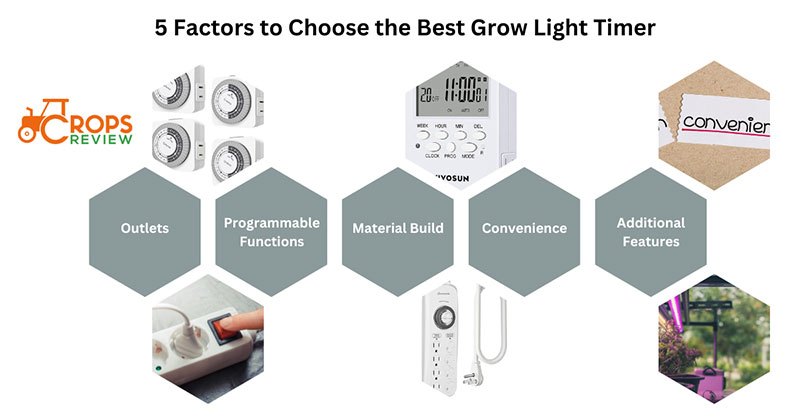
Outlets: The number of outlets determines how many grow lights or other devices you can connect to the timer. This determines how many grow lights or devices you can connect and control. A single outlet may be sufficient for smaller setups, but larger gardens may require multiple outlets. Having enough outlets allows for individual control over each light or device, customization of schedules, and even distribution of load.
Programmable Functions: Programmable functions refer to the capabilities of the timer to set specific on/off cycles and customize the duration of each cycle. Advanced digital timers offer features like multiple on/off cycles and different schedules for different days of the week. Look for a timer that provides the necessary programmable functions to match your desired lighting schedule.
Material Build: The material build of the timer impacts its durability and longevity. Opt for a timer that is made from high-quality materials to ensure it can withstand the demands of daily use in an indoor garden environment. While there may not be a quantifiable unit of measure for material build, timers made from sturdy materials like ABS plastic or metal tend to offer better durability.
Convenience: Consider the ease of use and convenience features the timer offers. This may include features like a large display screen, intuitive controls, and a user-friendly interface. Look for a timer that simplifies the process of setting up and adjusting the lighting schedule, making it easier for you to manage your indoor garden.
Additional Features: Some timers have additional features such as battery backup, power surge protection, or even remote control capabilities. These extra features can enhance the functionality and reliability of the timer. The ideal value of these features depends on your preferences and specific requirements.
How Do You Set Up Grow Light Timers?
To set up a grow light timer, begin by selecting an appropriate timer, ensure it’s properly connected to power, program the timer with on/off schedules suitable for your plants’ needs, attach your grow lights to the timer, activate the timer, and regularly monitor and adjust the schedule as required.
First, choose a timer (digital or mechanical) suitable for your setup and ensure it’s connected to a power source. Program the timer with specific on and off times to match your plants’ growth stage and lighting requirements.
Connect your grow lights to the timer, allowing it to control their operation. Activate the timer, and ensure it functions correctly. Continuously monitor your plants’ response to the lighting schedule and make adjustments if necessary to optimize their growth conditions.
How Do You Set the Timer on the LED Grow Light?
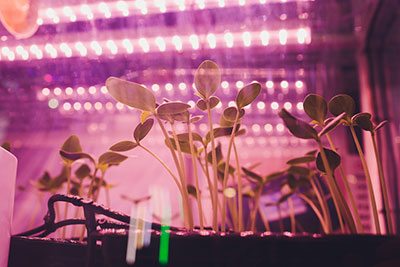
To set a timer for your LED grow light, plug the timer into a nearby power outlet, set the current time using the timer’s controls, and program the functions mentioned in the previous section.
Be sure to test the timer to ensure it functions correctly by manually advancing it to the programmed “On” and “Off” times to confirm the LED grow light’s response. Once tested, connect your LED grow light to the timer, allowing the light to be controlled by the timer’s schedule.
How Long Should Grow Lights Be on Per Day?
Grow lights should be on for between 8 and 16 hours per day, considering the seedling stage of the plant and mature plants.
It is recommended to provide seedlings with 14-16 hours of light daily, allowing for some dark time during their preparation.
Mature plants typically require a daily respiration period of at least 6 hours per day, while ideally, 8-10 hours of light is recommended.
How Do You Set Up Grow Lights for Indoor Plants?
To set up grow lights for indoor plants involves selecting the right light, installing hanging hardware, determining light placement, setting up a timer, checking light distance, monitoring and adjusting, maintaining proper ventilation, and considering regular maintenance.
To begin, choose a grow light that suits your plant’s light spectrum, intensity, and growth stage needs. Next, install adjustable hanging hardware to suspend the light and ensure it can be raised or lowered as needed. Position the grow light directly above the plant canopy to provide even coverage.
Connect the light to a timer and program it with appropriate on/off cycles. Verify the correct distance between the light and plants, as per guidelines. Monitor for signs of stress or light burn and adjust light intensity and duration if necessary.
Adequate ventilation prevents heat buildup, so consider using fans or exhaust systems.
Lastly, conduct regular maintenance, including cleaning the light’s lenses or covers to remove dust and dirt that can reduce light output, and adjust your watering and fertilization routines to match the increased light and growth rates facilitated by the grow light.

